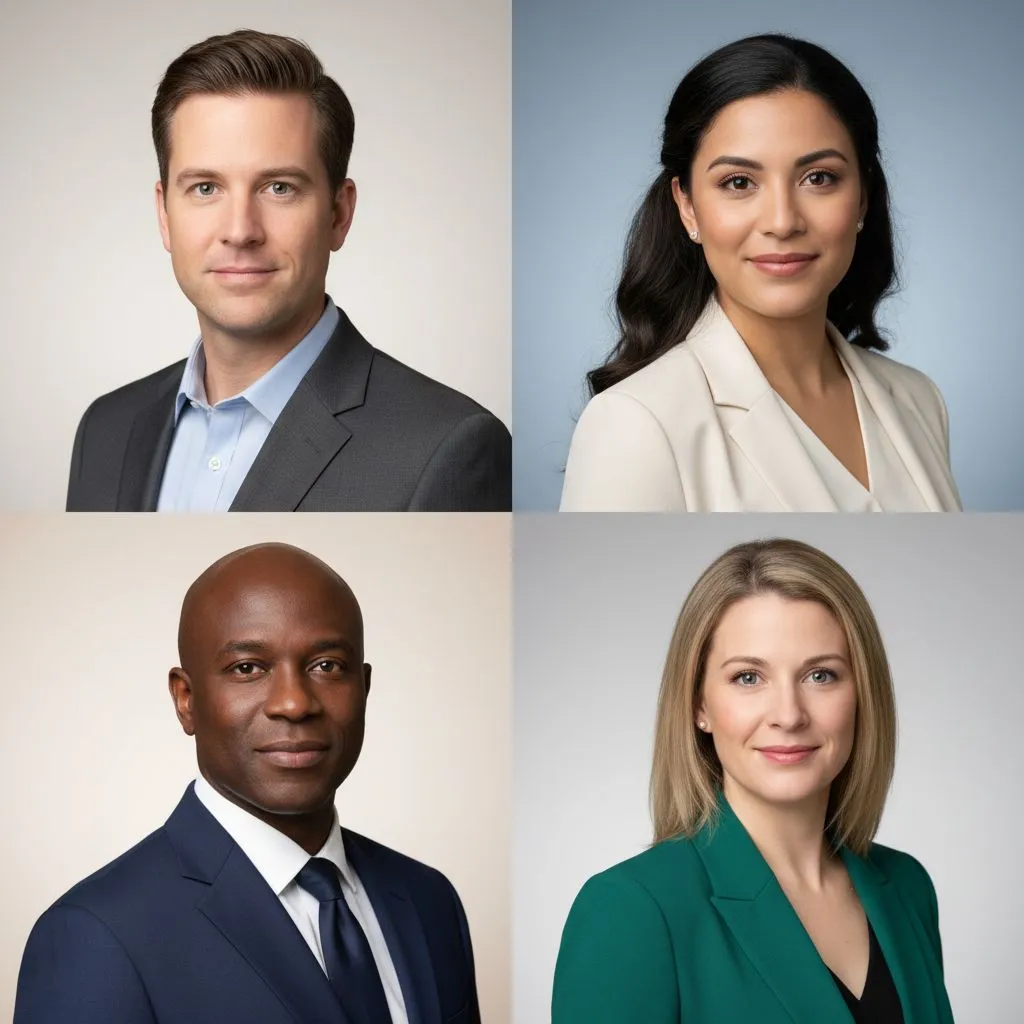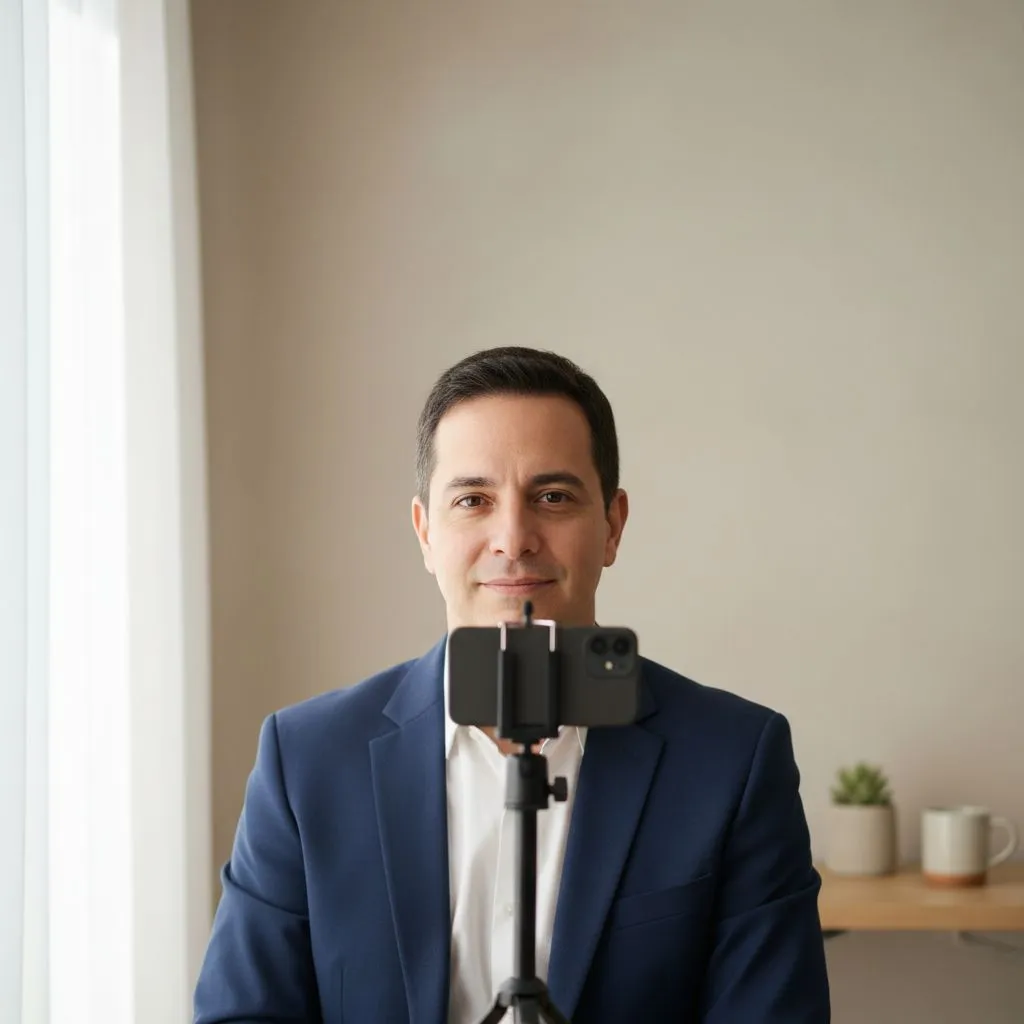LinkedIn Photo Best Practices (2025): Crop, Composition, and Style That Win Clicks
Your LinkedIn profile photo is often the first thing recruiters and hiring managers see. In 2025, where most first impressions happen on mobile and in search previews, a sharp, intentional headshot can significantly increase profile views and response rates.
Below are the current best practices for cropping, composition, and style—plus practical ways to get a professional result whether you’re DIY-ing it or using AI Business Headshots.

Full transparency: We offer a service that allows you to generate professional, high-quality business headshots with help of AI.
It only takes two input photos and few seconds to generate your very own headshots with our service. We offer lots of configuration options, refunds if you're not happy and you can get started for as little as $5.99.
The 2025 LinkedIn Photo Specs (Quick Wins)
- Aspect ratio: 1:1 (LinkedIn displays a circle crop).
- Recommended size: At least 400 × 400 pixels. Larger is fine as long as it’s sharp.
- File format: JPG or PNG. Keep file size reasonable for fast loading.
- Composition: Head-and-shoulders framing with your face filling 60–70% of the frame.
- Background: Simple, distraction-free, and brand-appropriate.
- Avoid: Heavy filters, busy patterns, harsh shadows, and cropped-off hairlines.
Bonus: Your banner image is separate from your profile photo. If you’re refreshing your headshot, consider aligning your banner style for a cohesive brand.
Crop That Converts: Framing Rules Recruiters Love
A great headshot is all about intentional framing. Use these guidelines:
- Fill the frame with your head and upper shoulders; leave a little headroom so the circle crop doesn’t cut into your hair.
- Place your eyes in the top third of the frame (roughly 40–45% down from the top).
- Angle your shoulders slightly (15–30 degrees) and turn your face back toward the lens for a natural, dimensional look.
- Keep your camera at eye level to avoid unflattering angles.
- Check the crop on mobile. Your photo should be clear and recognizable even at small sizes.
Tip: If you’re using a phone, turn on grid lines. Position your eyes along the top horizontal grid line for consistent composition.
Lighting That Flatters Without a Studio
Lighting makes or breaks a headshot. Soft, even light is your best friend.
- Use window light. Stand or sit about 3–5 feet from a window with indirect light (north-facing or shaded). Face the window or angle 45 degrees to create gentle depth.
- Avoid overhead lighting and direct midday sun. These create harsh shadows and squinting.
- If you must shoot indoors at night, bounce light off a wall or use a softbox or ring light at eye level.
- Clean your phone lens and avoid mixed lighting (e.g., warm lamp + cool window light) to prevent odd skin tones.
Pro tip: Look for catchlights (small reflections) in your eyes—they make portraits feel alive.

Backgrounds: Clean, On-Brand, and Distraction-Free
Your background should support your personal brand, not compete with it.
- Choose neutral tones like light gray, off-white, or soft blue. Subtle gradients or lightly textured backdrops work well.
- Put distance between you and the background (3–6 feet) to create gentle blur and separation.
- Avoid cluttered shelves, busy artwork, or bright objects that draw the eye away from your face.
- Consider brand alignment: a muted company color or a modern office vibe can add context without clutter.
If you need a consistent team look or a stylized background without booking a studio, AI Business Headshots can generate cohesive, on-brand backdrops in seconds.
Attire and Style for 2025
Dress as you would for an important meeting in your target industry—then simplify.
- Color: Solid, mid-tone colors (navy, charcoal, burgundy, forest) photograph better than bright white or jet black.
- Fit: Choose tailored pieces with clean lines. Wrinkles and bulky layers add visual noise.
- Patterns: Subtle is okay (fine herringbone, small check). Avoid bold stripes or loud prints.
- Necklines: Collared shirts, simple blouses, and structured blazers read as polished and timeless.
- Accessories: Keep them minimal. If you wear glasses, reduce glare by tilting them slightly or moving your light source higher.
Grooming matters: Neat hair, trimmed facial hair, and a matte finish on skin help avoid shine. Keep retouching natural—aim to look like your best professional self.
Expression and Body Language: Confident, Approachable, You
People respond to authenticity. The most effective LinkedIn headshots look friendly and confident.
- Soft smile or micro-smile, relaxed jaw, and engaged eyes.
- Chin down slightly, lengthen the back of your neck, and relax your shoulders.
- Open posture. Crossed arms can work if your expression is warm, but avoid appearing closed off.
- Think about your audience. For client-facing roles, lead with warmth; for executive or technical roles, aim for calm authority with a hint of approachability.
Try a few variations: direct-to-camera, a slight turn, and different micro-smiles. Pick the one that best matches your target role.
DIY vs. Pro: When to Upgrade
You can absolutely get a solid LinkedIn headshot with a modern smartphone and good light. Still, there are moments when an upgrade pays off:
- You’re job-seeking in competitive markets and need instant credibility.
- You want a consistent, brand-aligned look for your entire team.
- Your current photo is old, poorly lit, or inconsistent with your target role.
That’s where AI Business Headshots comes in. Upload just two photos of yourself, choose your attire, pose, and background, and get polished, professional headshots in seconds—no studio booking, no weather worries. Perfect for refreshing your personal brand fast.
Loading demo video...
See how AI-generated headshots work in seconds
Accessibility and Inclusivity Notes
- LinkedIn profile pictures don’t support alt text, but images in your posts do. If you share your headshot in a post, add descriptive alt text so it’s accessible.
- Choose attire and styling that reflect your authentic identity and cultural norms while staying professional.
- Ensure skin tones are represented accurately—avoid heavy filters or lighting setups that distort color.
Refresh Cadence and Measuring Impact
Treat your photo like any other brand asset.
- Refresh every 12–18 months or when your look changes noticeably.
- Track profile views and search appearances before and after updating.
- Ask a few trusted peers for objective feedback based on your target role.
- Keep the rest of your profile current—your headshot works best alongside a strong headline and About section.
Your 5-Minute LinkedIn Photo Checklist
- Good light: Face a window or soft, diffused light source.
- Clean background: Neutral, uncluttered, on-brand color.
- Framing: Head-and-shoulders; eyes in top third; leave headroom.
- Expression: Warm, confident, authentic.
- Wardrobe: Solid mid-tones, simple lines, minimal accessories.
- Quality: Sharp focus, no heavy filters, JPG/PNG, square crop.
Ready to Look the Part?
If you’d like a studio-quality result without the studio, try our service. With AI Business Headshots, you upload two photos, pick your look, and get a set of expertly composed, well-lit headshots tailored to your brand—ready for LinkedIn and everywhere else you show up professionally.
A strong LinkedIn photo opens doors. With the right crop, composition, and style, you’ll make a memorable first impression—and with AI, getting there is now fast, affordable, and stress-free.
Full transparency: We offer a service that allows you to generate professional, high-quality business headshots with help of AI.
It only takes two input photos and few seconds to generate your very own headshots with our service. We offer lots of configuration options, refunds if you're not happy and you can get started for as little as $5.99.